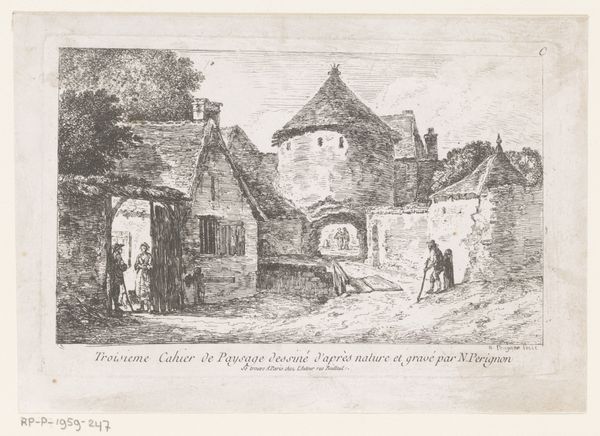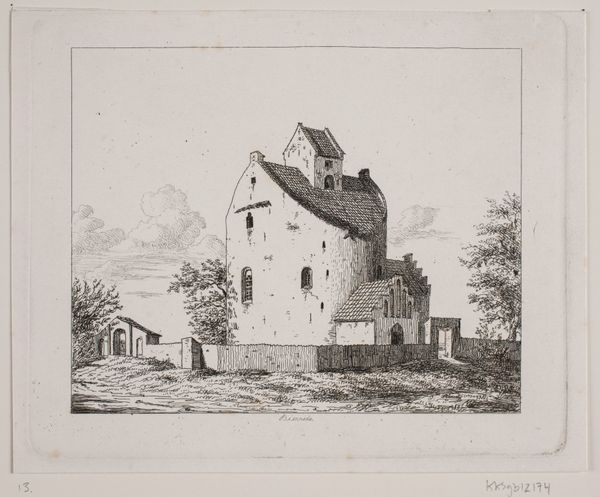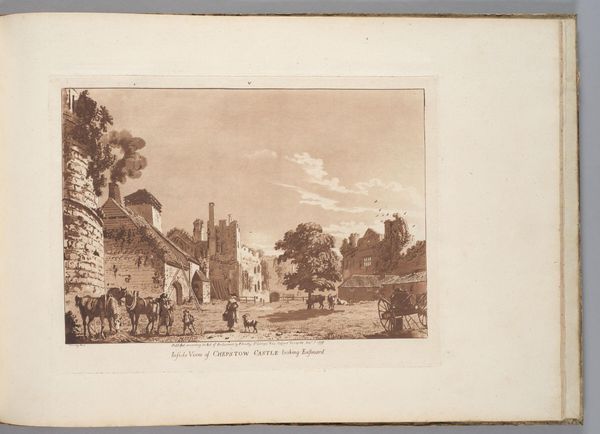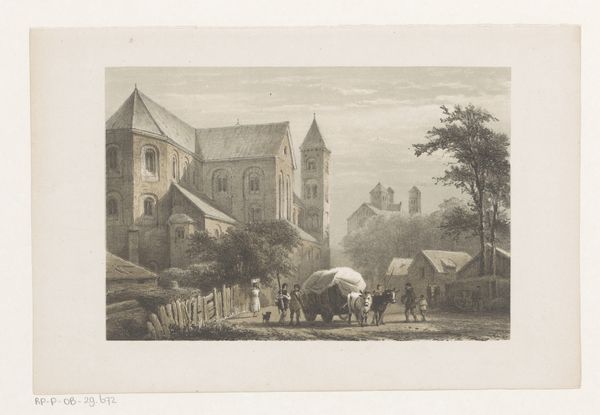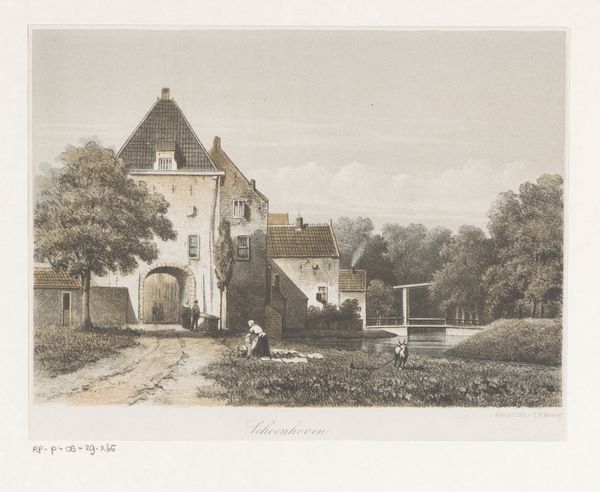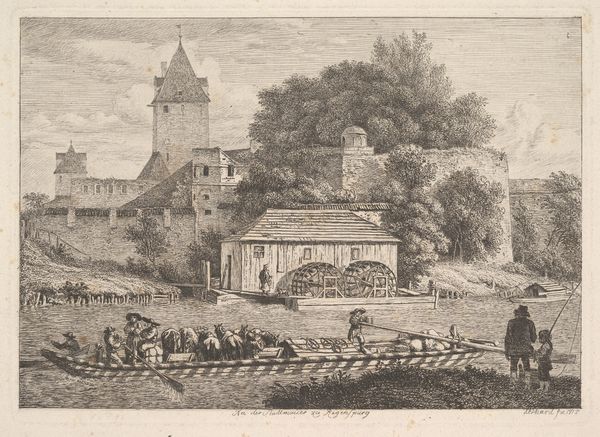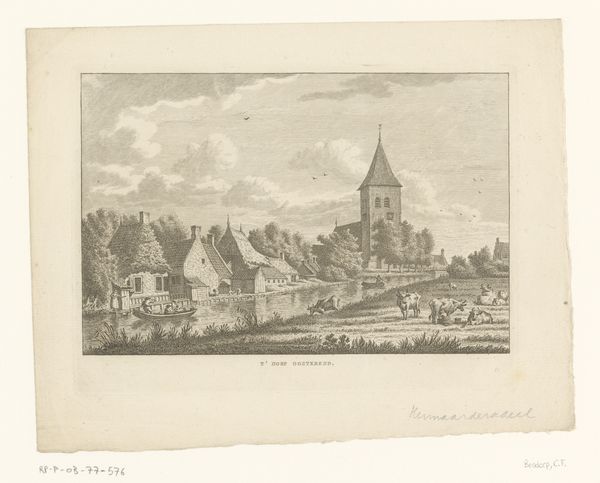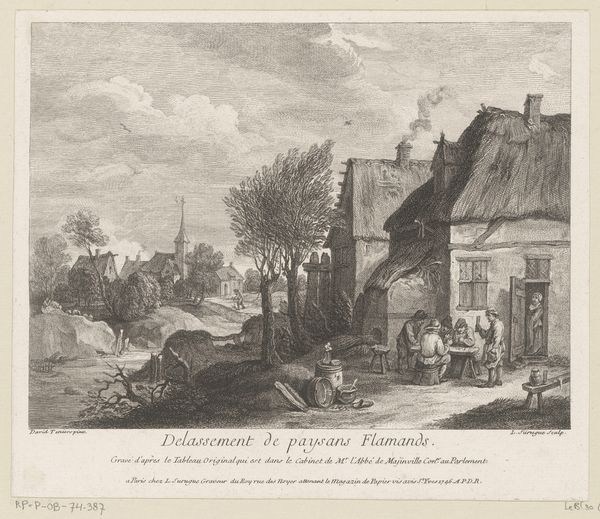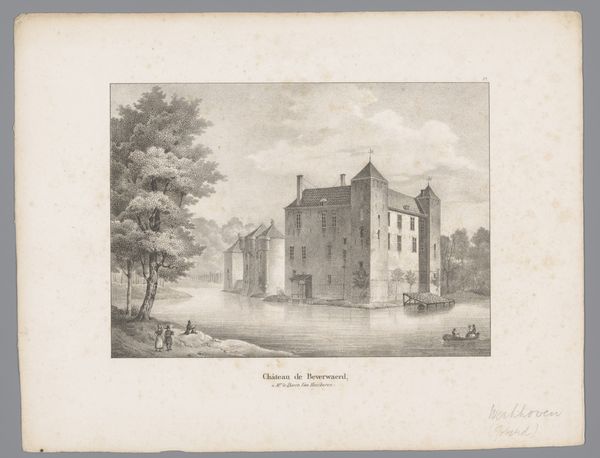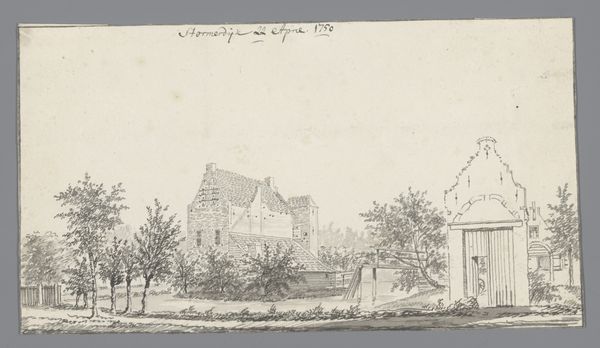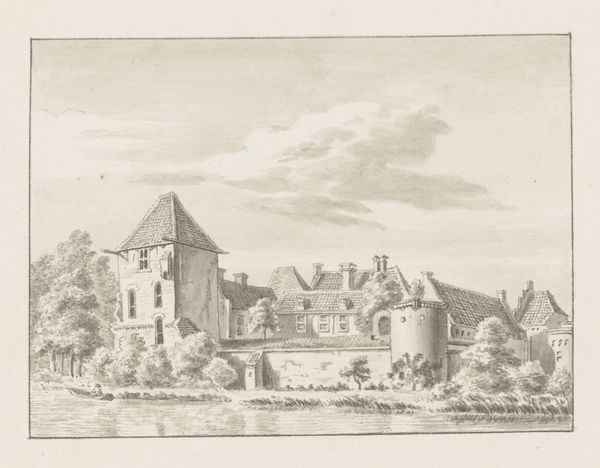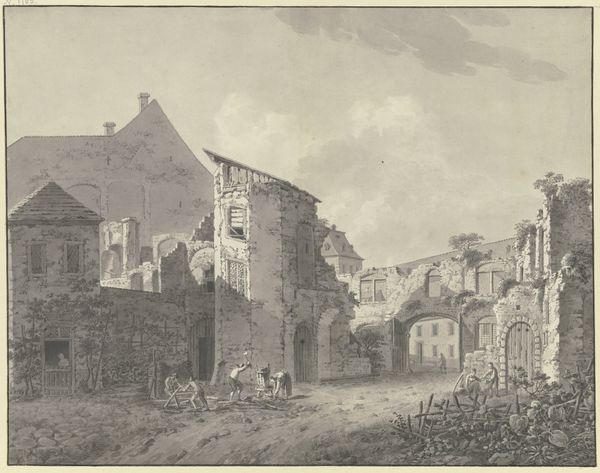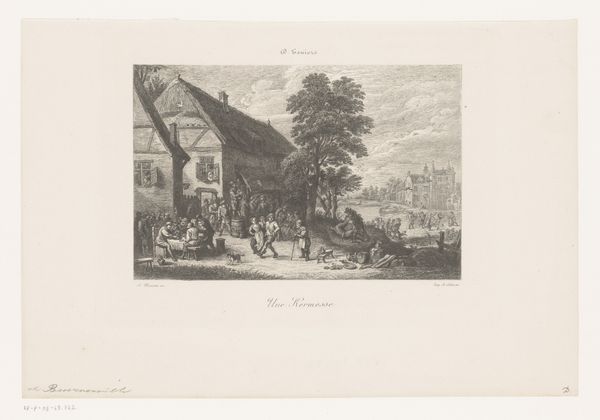
Dimensions: height 186 mm, width 231 mm
Copyright: Rijks Museum: Open Domain
Editor: Here we have an anonymous watercolor painting titled "Gezicht op Leerdam," created sometime between 1847 and 1865. It's a quiet scene, but what strikes me is the distinct separation between the town's architecture and the rural setting. How do you interpret this work? Curator: This image presents an interesting interplay of power dynamics and societal structure. The imposing architecture of Leerdam looms over figures tending to livestock. Consider this—how does the artist's choice to position these figures in the foreground, seemingly dwarfed by the built environment, comment on their social standing within the town's economy? Editor: That's interesting. I hadn't thought about the scale in that way. Curator: Also, think about what's absent. Where are the other signs of commerce and industry? The very absence of industrial markers speaks volumes about what daily life may have been like for women in similar communities during this time. What stories can you imagine for the people and animals that we see, and those we don't see? Editor: It makes me wonder about the role of agriculture versus industrialization and how gender might have influenced those roles. Curator: Exactly. Now, imagine the perspective of a woman in the scene – what restrictions might she face, and what freedoms might she find within this setting? Consider also the limitations imposed upon the cows in the foreground. Editor: Seeing it that way changes everything. I came in thinking it was a simple landscape, but it feels so much more layered now. Curator: Precisely. It shows us how seemingly straightforward landscapes are loaded with social and historical implications when viewed critically.
Comments
No comments
Be the first to comment and join the conversation on the ultimate creative platform.
